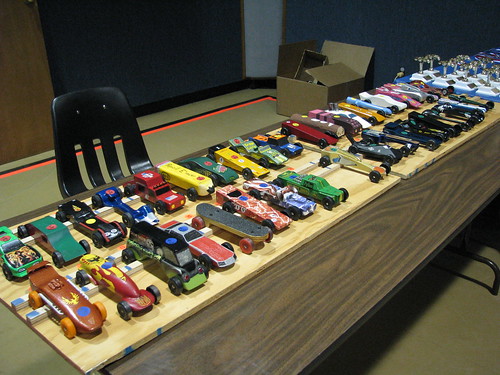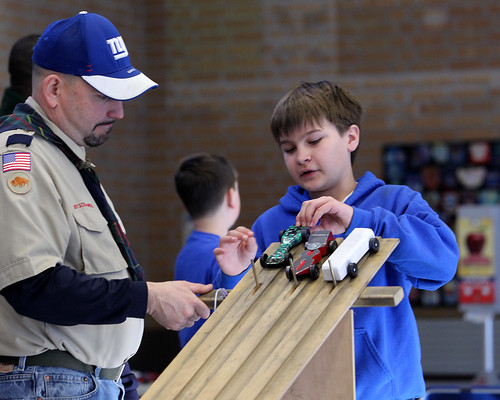The Pinewood Derby is an annual Boy Scouts of America (BSA) Cub Scout event in which kids build and race pine cars. Every year, Cub Scouts — with some help from their families — assemble pine cars from scratch. And though participating itself is fun, winning races earns them a trophy, bragging rights and a huge sense of accomplishment.
So, how can you help your son win this year’s Pinewood Derby? With the help of simple physics, you can build a car that’s designed to speed past the competition. Here are a few tips for building a lightning-fast, regulation-approved pine car.
1. Know the rules and regulations
Be aware of the official Pinewood Derby rules before working on your car to avoid disqualification. Some key points to remember:
- All cars must be original entries, must be made of wood and cannot be modified or enhanced by a third party.
- Cars and added specs must follow the correct height, width, length and weight requirements.
- Only Official Scout Grand Prix wheels and BSA nail-type axles are allowed, though some modifications can be made.
- All cars must pass an inspection in order to compete.
- Repairs cannot be made after inspection, with the exception of repairing damage from colliding with another car or object.
2. Prep work
Plenty of pine car kits are available to choose from; some include a basic wooden block and wheels, and others include a premade design with attached wheels, paint supplies and stickers. The basic wood block kit is more difficult to complete, but you’ll have more creative freedom.
First, bake the wood block in the oven at 250 degrees Fahrenheit for around two hours. This removes any moisture in the wood, which makes it lighter and faster. Next, choose a fast design and get to work!

3. Less friction, more speed
The smoother your car runs, the faster it’ll go come race time — this involves a lot of sanding and lubrication. Use hand sanders on the body, axles, wheels and any modifications to make it as smooth as possible and to remove rough spots and reduce friction. Design your car so that most of the weight is in the back, as this will make it faster in the flat stretch of the track. Now you can paint and seal.
After painting, lubricate the entire car with dry powdered graphite or another regulation-approved lubricant, making sure that it fully absorbs into the car, and that it doesn’t drip or seep onto other surfaces.
4. Test it out
Once the car is complete, take it on a test run to ensure that it runs straight. If it veers to the side, it likely means the axle is crooked. You can fix the axles by drilling new holes and moving the axles or by trying to bend the crooked axle. Test run your car on multiple surfaces — including on flat areas and inclines — to make sure everything works properly.
5. Show your support
As a parent, it’s normal to want to help your son build the perfect car, but there’s a fine line between giving advice and taking over the project. Remember that this is his chance to show off his creativity and hard work, so the best way you can assist is to offer encouragement and show that you’re proud of what he’s accomplished.
Building a pinewood derby car that’s sure to win is a challenge, but with hard work and a fast design, your son’s car can zoom past the competition.
Originally posted on December 18, 2013 @ 7:28 pm

